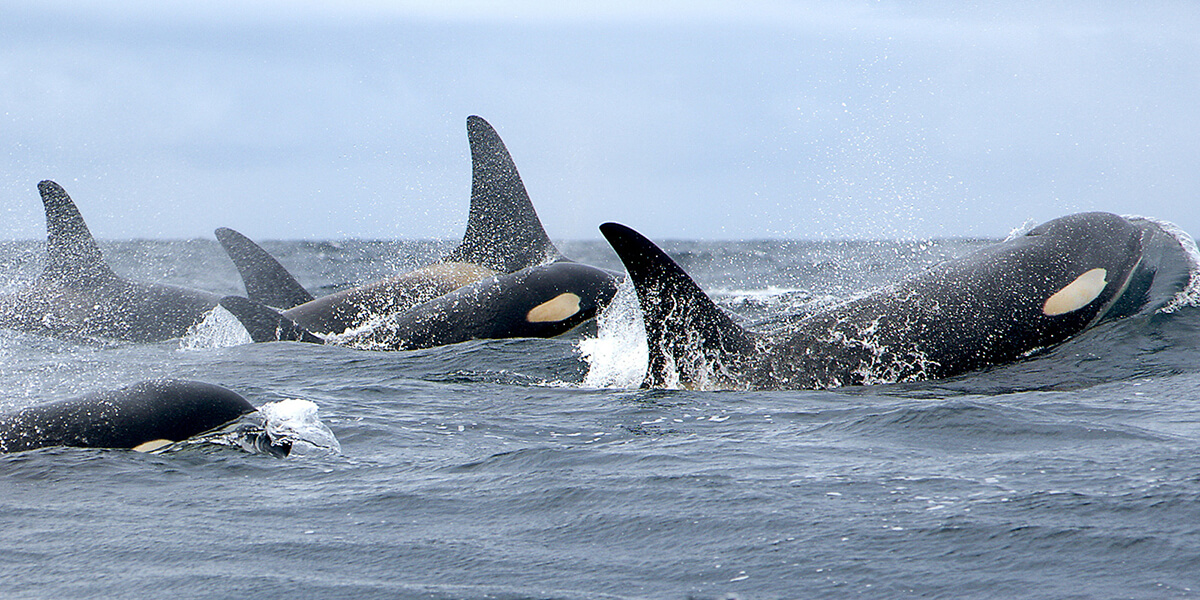About the Orcas
 INTRODUCTION: Killer whales are found in every ocean, but they are segmented into many small populations, at least two of which are likely separate species, that differ genetically, as well as in appearance, behavior, social structure, feeding strategies and vocalizations. The so-called “Resident” killer whales are fish eaters found along the coasts on both sides of the North Pacific. In the eastern North Pacific, there are three populations of Resident killer whales: Alaska Residents, Northern Residents, and Southern Residents. The Southern Residents, which comprise the smallest of the ‘resident’ populations, are found mostly off British Columbia, Washington and Oregon, but also travel to forage widely along the outer coast. Southern Residents are Chinook salmon specialists. They feed on Chinook year-round, and it is their primary prey in spring and summer when they occupy inland waters. During the fall and winter, when Southern Residents disperse widely, they add other salmon species (Coho in fall and chum in winter) and some demersal fishes to their diet (e.g., halibut and lingcod). Resident killer whales associate in stable matriarchal social units called ‘pods’. There are three pods for Southern Resident killer whales, called the J, K, and L pods.
INTRODUCTION: Killer whales are found in every ocean, but they are segmented into many small populations, at least two of which are likely separate species, that differ genetically, as well as in appearance, behavior, social structure, feeding strategies and vocalizations. The so-called “Resident” killer whales are fish eaters found along the coasts on both sides of the North Pacific. In the eastern North Pacific, there are three populations of Resident killer whales: Alaska Residents, Northern Residents, and Southern Residents. The Southern Residents, which comprise the smallest of the ‘resident’ populations, are found mostly off British Columbia, Washington and Oregon, but also travel to forage widely along the outer coast. Southern Residents are Chinook salmon specialists. They feed on Chinook year-round, and it is their primary prey in spring and summer when they occupy inland waters. During the fall and winter, when Southern Residents disperse widely, they add other salmon species (Coho in fall and chum in winter) and some demersal fishes to their diet (e.g., halibut and lingcod). Resident killer whales associate in stable matriarchal social units called ‘pods’. There are three pods for Southern Resident killer whales, called the J, K, and L pods.- Marine Mammal Commission

Killer whales. (Holly Fearnbach, NOAA)
Species Profile

Killer Whale
Orcinus orca
Status:
Protected
Concern:
Data Deficient - Orcinus orca has most recently been assessed for The IUCN Red List of Threatened Species in 2017.
Species Taxonomy
| Kingdom | Animalia |
|---|---|
| Phylum | Chordata |
| Class | Mammalia |
| Order | Cetacea |
| Family | Delphinidae |
| Genus | Orcinus |
| Species | orca |